
VOL. 6, No. 1
Abstract: Open Badges are digital representations of achievements or skills which describe the framework, significance, and outcomes of a learning procedure based on specific criteria. The Open Badges’ collection can be used by its holder as a virtual CV of skills and qualifications. The practice of development, issue, and use of badges is connected with gamification elements, as badges are seen as incentives towards positive behavior and are powerful pedagogical tools. Furthermore, the use of Open Badges could become an alternative certification system for skills and knowledge acquired in online, blended and other informal learning environments and systems. In this article, we present case studies in which Open Badges have been used as credentials for educational practices in pilot educational systems, either in non-formal or informal learning systems, with specific emphasis on open learning environments. Key insights from these case studies highlight the extended use of Open Badges and stress the need for a common evaluation and accreditation system in open online learning environments.
Keywords: open badges, open and lifelong learning, evaluation and accreditation, gamification.
Digital technology encourages access to information and brings about potentially new learning methods. Moreover, the digital era can enhance the development of skills in environments of formal, non-formal and informal learning. The concept of learning today is extended in multiple online and off-line environments and includes a variety of experiences and interactions. The learning process can be social, informal, participatory and creative, and can be achieved by the use of open tools, resources and methods. Learners actively participate in lifelong learning processes. In this context, Open Badges can play a key role in learning, working as a bridge between different frameworks, making alternative learning channels compatible, viable and functional.
Open Badges have already entered open educational systems at an international level since they are proposed as an alternative way to support and recognize knowledge and skills acquired informally through various informal learning environments, situations and experiences. Concerns about the validity and credibility of providing Open Badges as a learning process, as well as the pedagogical dimension of their use (for example, as a means of motivation) have already been formulated by researchers and trainees (Niari & Papadimitriou, 2017).
This article reviews the literature for the concept of Open Badges and the methods of evaluating the quality of case-study data of modern web environments, learning networks and generally open educational systems. The first unit introduces the key characteristics of open education and the need to design and study open badges to assure interoperability in open education systems. The next units present Mozilla open badges, badges as gamification elements, badges to assess open educational resources and various badges/labels/stamps offered by European projects which follow a set of evaluation criteria or procedures. The paper closes with the discussion and conclusions in regard to the role of open badges as credentials in open education systems.
The article is a critical approach, analysis and interpretation, based on a literature review and also on conclusions and findings of the appearance and use of the Open Badges in open education systems. The guiding research questions in this article raise related issues:
The answers to these questions and the discussion that emerges highlight issues of evaluation and accreditation in open education systems.
Open Education aims to remove unnecessary barriers in learning by offering pupils and students the opportunities of an educational system that focuses on their particular learning needs, using multiple learning activities. The key characteristics of Open Education are the following (The Commonwealth of Learning, 2003):
Open Education aims to increase learning opportunities by harnessing Learning Environments on the Internet (Papadimitriou, 2014). In the framework of certification and recognition, one of Open Education’s main features, Open Badges (OB) are designed, developed and studied at an experimental level, aiming towards homogeneity and interoperability in open education systems.
Open Badges are known under a variety of names. For example, when used in Greek case studies alternative terms like “labels” or “quality stamps” are used, depending on the terminology of each learning environment.
Table 1. Open Quality Badges and Various Terms.
Term |
Provider |
Open Badges |
Mozilla Open Badges Infrastructure (OBI), published an interoperability prototype (Mozilla, 2013; The Mozilla Foundation, Peer 2 Peer University & The MacArthur Foundation, 2012. |
Badges for Lifelong Learning |
4th Digital Media & Learning (DML) |
Moodle Badges Free |
Moodle 2.5, Moodle 2.6 και Moodle 2.7 Mozilla Open Badges (http://moodleBadges.com/). |
OERC Commons, Microsites and Events |
Quality labels of Open Educational Resources – OER Badges. |
|
The OERC Commons are addressed to all members of the OER Commons community. They recognize the development of skills related to engaging with community resources. |
|
Microsites Badges were created in collaboration with the partners of the OER Commons community and awarded for specific community action, e.g., Global OER Super Contributor or Global Author Expert. |
|
Events Badges awards members who participate in special events such as the Big Ideas Fest. |
Quality Stamps in Learning Objects |
Photodentro OER Repository. |
Quality Badges |
Open Educational Practices based on OER. |
Quality Badges |
European network eTwinning. |
Mozilla Open Badges are digital representations of learning and achievements (Casilli & Hickey, 2016) which consist of a set of small digital certificates.
The Mozilla Open Badges system is an initiative to explore alternative ways for students to gain recognition of skills and achievements that they have acquired outside of the school environment, such as open credentialing and accreditation for all types of learning, including informal and also ‘interest driven’ learning (Knight & Casilli, 2012), which is the key element for motivation in so-called Communities of Practice (Wenger, 1998).

Figure 1. Open Badges (Bryan Mathers).
The technical specifications of the Mozilla Open Badges system define the metadata required for system interoperability. The main metadata are: name, description, criteria, publisher, proof, date of issue, specifications and labels. According to Klein (2013), “90% of the badges system is not visualized”. Visual representation of achievements is a core element for students’ motivation – hence the OBI system could play an important role towards that. Mozilla Open Badges can be issued:
At the same time, Open Badges can also be issued by “formal and informal educational institutions, multinational companies, industry associations, nonprofit companies and groups interested in professional development of employees” (Niari & Papadimitriou, 2017).
The procedure of issuing and verifying badges is visualized in Fig. 2.
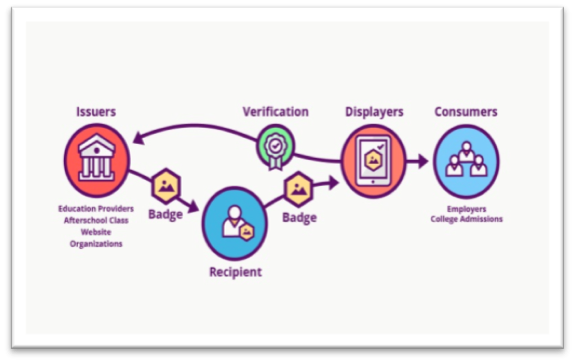
Figure 2. The Open Badges Ecosystem
(Erik Knutson, Concentric Sky).
Open Badges help learners connect different learning environments and learning outcomes with “learning evidence” and the creation of “learning pathways”. At the same time, they can be used as a pedagogical tool, an incentive for desirable behavior in the learning process, but also a certification of skills and qualifications that the traditional way of evaluation does not include (Niari & Papadimitriou, 2017). Besides, in the modern information society, the established certificates of knowledge may become inadequate and / or dysfunctional “since the dynamics of the conditions in the production area will make it necessary for new qualifications and new skills” (Tully, 1994, as cited in Kron & Wise, 2007).
Badges as one of the key gamification elements has attracted attention to a large extent. Their significance was highlighted in the 4th Digital Media & Learning (DML) Competition, organized by HASTAC, MacArthur Foundation Inc., focused on creating a badge system for lifelong learning (2011).
In addition, another badge system that gained attention is the Mozilla Open Badges system, which was designed as a method where participants receive and display the badges they receive by various organizations (Mozilla, 2013). Mozilla's thinking is that the trainee has a “Badge Backpack”, where s/he collects and stores the badges received from various systems and teams. Then, the trainee can share the content of the backpack with others as a method of displaying a pathway of learning achievement. To date, the Mozilla Open Badges Infrastructure (OBI), which publishes an interoperability standard (Mozilla, 2013; The Mozilla Foundation, Peer 2 Peer University & the MacArthur Foundation, 2012), offers the most well-structured environment for badge development.
However, other systems have appeared with similar goals and approaches, a fact that underlines the ever-increasing influence of badges (Niari & Papadimitriou, 2017). Traditional class environment evaluation with letters or numbers can be considered as a type of badge system. One of the advantages of the badge versus grade system is that badges can be indicate more specifically what the student has already learned. Instead of a "B" in mathematics, badges provide additional information on how the student has achieved the specific learning outcome. Earning badges of different levels in different modules allows students not only to own but also to demonstrate thematic strength and competitiveness.
Moreover, the Moodle platform has developed the “MoodleBadges Free” system. Moodle is one of the most popular learning platforms on the Internet that allows teachers to manage distance learning processes. One of the features of the platform is that it provides opportunities to facilitate the learning process through gamification. This also includes the granting of badges (Kiryakova, Angelova, Yordanova, 2014; Muntean, 2011). Badges are granted to students when they complete a range of activities or attain a certain level of knowledge and skills. Students can then share and display their badges and enhance their “social” recognition and status. At the same time, Moodle “allows” teachers to reward students for each integrated activity (i.e., the “Moodle Badge”). The “MoodleBadges Free” is a badge library that can be rewarded for achieving knowledge, skills and learning experiences and it is designed to work on Moodle 2.5, Moodle 2.6 and Moodle 2.7, on the Internet, on a tablet, the iPhone, and through the Mozilla Open Badges platform (Moodle, nd).
Badge Systems Aiming to Assess Open Educational Resources
The effective use of Open Educational Resources (OER) offers practical application and supports the key features of open education (accessibility, flexibility, and learner-based education). The community of OER Commons is based on the expertise of its members. “OER Badges” could be a unique system aiming to assess and accredit members’ expertise.
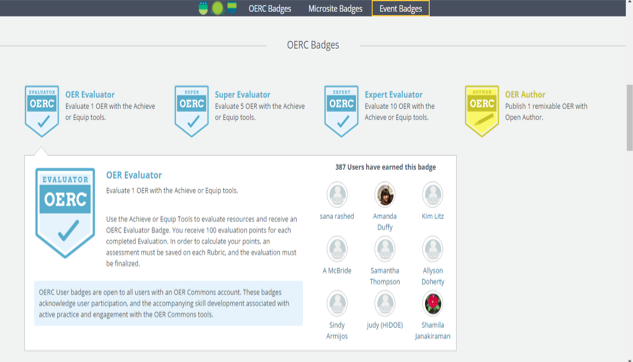
Figure 3. OER Commons Badges Category, 2016.
There are three categories of OER Badges (OER Commons, 2016): OERC Commons, Microsites and Events, respectively presented in Figs. 3, 4, and 5. The OERC Commons Badges are addressed to all members of the OER Commons community. They recognize the development of skills related to engaging with community resources. Microsites Badges were created in collaboration with the partners of the OER Commons community and are awarded for specific community action, e.g., Global OER Super Contributor or Global Author Expert. Events Badges reward members who participate in special events such as the Big Ideas Fest.
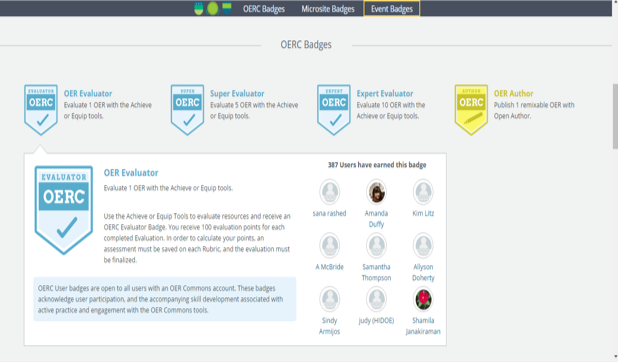
Figure 4. Event Badges Category, 2016.
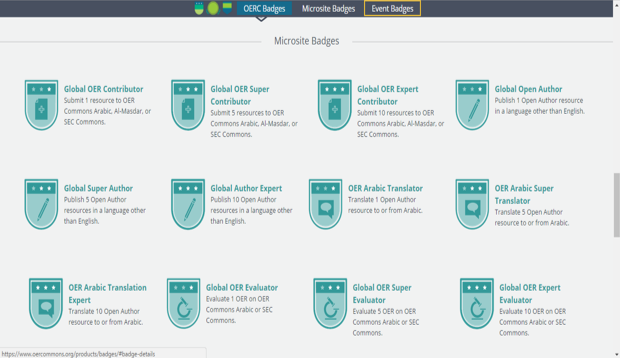
Figure 5. Microsite Badges Category, 2016.
In the next section we attempt to examine and evaluate various badges used in Europe and Greece, in order to answer the research questions.
The OER Repositories of the “Photodentro” family are a central e-service of Greece’s Ministry of Education for the organization and distribution of digital educational content in the school community. These OER Repositories host learning objects (i.e., autonomous and reusable digital material that can be used for teaching and learning) such as experiments, interactive simulations, investigations, images, educational games, 3D maps, exercises and more. The “Photodentro” Repository includes a collection of about 17,470 enriched interactive school books as well as collections of selected objects developed within the framework of multiple educational projects of Greece’s Ministry of Education or other bodies (Photodentro, nd).
All of the learning objects of the Photodentro OER Repository are open and can be accessed under the Creative Commons CC BY-NC-SA license. The Photodentro OER Repository implements the national strategy for digital educational content and promotes the use of OER for schools. OER provide opportunities in using open knowledge to improve the quality and access of education (Papadimitriou, Megalou & Tzovla, 2015).
Various processes of evaluating learning objects have been applied at Photodentro’s seven OER Repositories. Learning objects from the Repository “Photodentro/Open Educational Practices” are awarded with “Quality Labels” based on a specific evaluation process. Objects from all other Repositories are awarded with “Quality Stamps” which are provided according to the brand name of their producer.
Labels, stamps, and badges have been used as terms to evaluate and accredit resources and processes in different learning environments. A commonly accepted term has not yet been adopted within the learning community.
The main learning object evaluation process of the Photodentro OER Repositories is the attribution of “Quality Stamps”. The learning objects of the Photodentro OER Repositories are evaluated with “Quality Stamps” by the producer and also content provider of the learning object itself. For example, the producer/provider Educational Radio-Television, the Pedagogical Institute, or the framework of the project in which the Digital School was developed, attribute these stamps as they have a distinctive role/brand in the Greek education system.
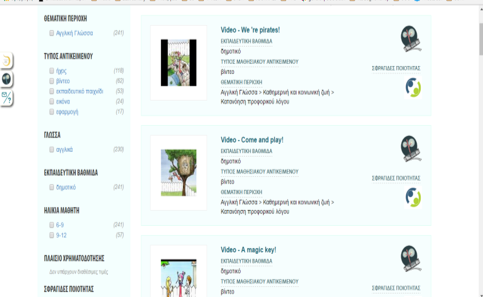
Figure 6. Quality Stamps in Open Educational Content.
Today, the Photodentro Quality Stamps which are provided by their producer/content provider are the following (Photodentro, nd):
i-create platform: students generated videos and awarded by the Educational Radio-Television.
A different process of assessment occurs in the Repository of Open Educational Practices. An Open Educational Practice is defined as a set of learning activities which use OER, implemented within and/or outside the classroom, and approach pedagogical innovation and creativity in terms of content, goals, activities or methodology (Papadimitriou, Megalou & Tzovla, 2015; Megalou et al., 2016). The impact of applying good practice can be assessed and measured by considering pupils, participating teachers or the broader school and/or educational community.
Teachers were encouraged to provide their good practices and gain quality labels so they could participate in the network of innovative teachers.
The indicative criteria by category considered for awarding teachers and providing a Quality Label to the proposed good practice are the following:

Figure 7. Quality Labels in Open Educational Practices.
Another case study of quality labels concerns the contest for best educational practices in the framework of the European project SAME WORLD (SAMEWORLD, nd). In the SAMEWORLD framework, an educational practice is a teaching method or technique that has been actually implemented in a certain educational context and is worth sharing as it transfers successful educational experiences; it includes learning activities with either short length in-class activities on certain subject matters (i.e., lasting a few teaching hours), or long-term activities in the context of interdisciplinary extra-curricular school projects (i.e., lasting a few weeks or months).
The SAME WORLD contest was open to secondary education teachers all over Europe who implemented Environmental Sustainability Education (including Global Citizenship Education) practices with their secondary school students within the prescribed period (school years 2014-2015, 2015-2016 and 2016-2017). The contest focused on the SAME WORLD project’s topics, i.e., climate change, environmental justice and environmental migration, as well as on other sustainability-related topics, thus promoting the project themes and allowing participants to deepen their knowledge.
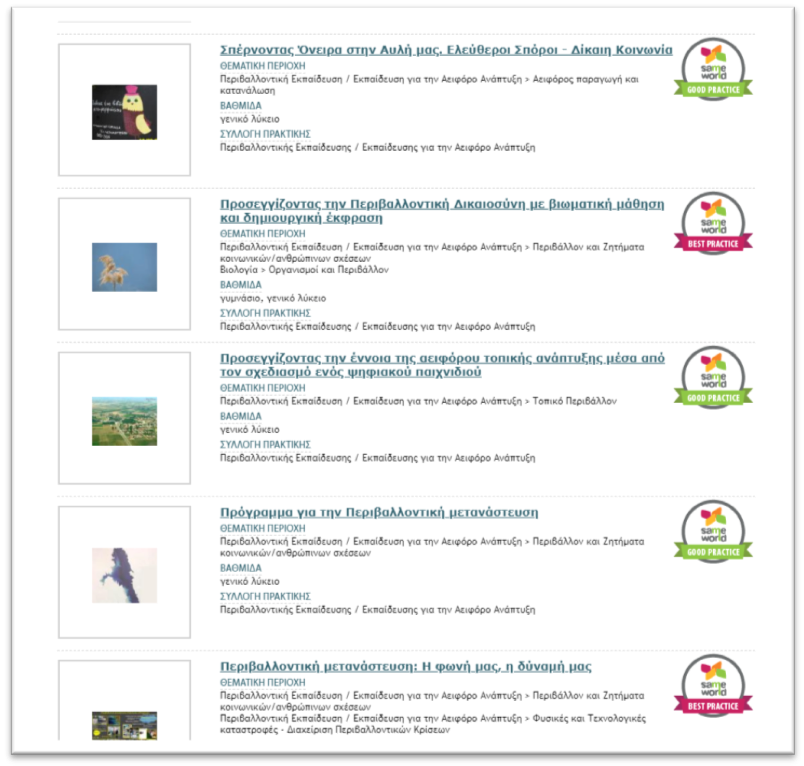
Figure 8. Quality Labels in the European Project SAME WORLD.
All submissions / good practices were evaluated by national evaluation committees, composed of environmental sustainability education experts at a national level. Three of them received the “best quality label”, and also ten more the “good quality label” in Greece and other participating countries. The European Evaluation Committee awarded three good practices with the “best quality label” at the European level, following the evaluation criteria and guidelines.
The European eTwinning network is part of the Erasmus+ project and promotes the use of ICTs and cooperation between European schools. The eTwinning project has a successful history of fourteen years and has been attractive to the Greek educational community since the beginning in 2005. This is evidenced by the strong participation of teachers in the action and the awards/distinctions of Greek schools at European level. The Hellenic National Support Service (HNSS) has organized eleven National eTwinning Contests (eTwinning, nd) in order to recognize the best eTwinning projects for Greek school units. The evaluation of the projects is based on the same criteria set for the European Awards by a committee of the members of the National Support Service (NSS).
The National Quality Label is awarded in eTwinning projects that have managed to reach a high level of quality by fulfilling a number of criteria set by the Central Support Service, in cooperation with the respective National Support Services of the action. The Quality Label is the tangible recognition for teachers, students and schools of the high level of eTwinning activities, offering a public affirmation of their commitment to quality and 'confidence' in European cooperation.
The National Support Service evaluates teachers’ requests for the National Quality Label. In order for the National Support Service to proceed with the evaluation to award the Quality Label to a project, the following five conditions must be met:
If these five conditions are met, the project is assessed on the basis of six evaluation criteria related to the following areas:
The National Quality Label is a prerequisite for a project to be eligible for the European eTwinning Contest. Those who earn a National Quality Label are awarded at the European level.
The aforementioned criteria apply from the school year 2015-16. The criteria of the previous years were the pedagogical innovation and creativity, the integration into the educational process, partnerships, the creative use of ICT, the sustainability and scalability and its results and benefits.
Trying to answer the first research question in regard to the role and the contribution of Open Badges, we claim that they are a way to record performance and progress, to mark knowledge in various frameworks and to strengthen connections between community users, all critical to support open learning.
Ilona Buchem (nd), professor for Digital Media and Diversity at Beuth University of Applied Sciences Berlin, considers Open Badges as the required link to the development / expansion of open education. In the constantly expanding movement of open education, open learning, open universities, OER, Massive Open Online Courses (MOOCs), there is a need to redesign the “diplomas” and invent valid and reliable digital certificates. This role is likely to cover the design of Open Badges as digital, visual representations of skills or achievements. In addition, Eva Baker (2007) in her presidential address at the American Educational Research Association, referring to the alternative forms of recognition of prior learning, also spoke of the use of badges, while other researchers consider their role in conjunction with mass open e-learning, and the impact of these trends on research into the sociological dimensions of formal education (Baker, 2011; Gibson, 2012).
Other researchers (Young, 2012) see a dark side, believing that badges turn learning into a “product” and thus “deceive” the difficult challenge of creating / discovering something new. Hence, instead of looking for knowledge through their individual curiosity, students might concentrate their efforts on an endless hunting for badges.
At the same time, another aspect of the use of badges is emerging as Willis, Quick and Hickey (2015: 3) highlight: “Combined data of multiple badges could be used by web crawlers or data companies to build individual profiles of learners, including what content they would like to purchase, what specific skills could be utilized in the workforce, or how future content might be developed to attract similar learners”.
In regard to the second research question, this article highlights a variety of ways where Open Badges have been used so far in various non-formal or informal learning systems. A variety of terms has been used to evaluate those systems based on specific criteria, procedures or the brand of the producer/provider. A common and homogenized term and system of criteria and procedures will help evaluation and accreditation systems.
Open Badges also could be used to improve the quality of studies by reinventing a common system of digital credentials as prototype. This prototype will work as the bridge between different frameworks, making alternative learning channels compatible, viable and functional. It will include large amounts of evaluation data and it will be oriented in different target groups. Students will be motivated in an attractive way similar to digital games and adults will certify their informal learning.
Taking into account the aforementioned case studies of the article, we propose the following set of criteria as a basis to form the prototype digital credential system:
A range of questions related to open badges still exists:
Research on open badges in the future may focus on the following axes:
Baker, E. L. (2007). 2007 Presidential address the end(s) of testing. Educational Researcher, 36(6), 309–317.
Baker, D. P. (2011). Forward and backward, horizontal and vertical: Transformation of occupational credentialing in the schooled society. Research in Social Stratification and Mobility, 29, 5–29.
Buchem I., (nd). Open Badges the missing link in open education. Available at: http://www.slideshare.net/ibuchem/open-Badges-the-missing-link-in-open-education?ref=https://ibuchem.wordpress.com/2016/03/12/open-Badges-the-missing-link/
Casilli, C., & Hickey, D. (2016). Transcending conventional credentialing and assessment paradigms with information-rich digital badges. The Information Society, 32: 2, 117-129.
eTwinning (nd). Retrieved 11/12/2016 from https://www.etwinning.net/el/pub/index.htm
Gibson, D. (2012). Game Changers for Transforming Learning Environments. In F. Miller (Ed.), Transforming Learning Environments: Strategies to Shape the Next Generation, Advances in Educational Administration, 16, pp. 215–235. Emerald Group Publishing Ltd.
Kiryakova, G., Angelova, N., & Yordanova, L. (2014). Gamification in education. Proceedings of 9th International Balkan Education and Science Conference. Available at: http://dspace.uni-sz.bg/handle/123456789/12
Knight, E., & Casilli, C. (2012). Mozilla Open Badges. In D.G. Oblinger (Ed.), Game changers: Education and information technologies. Louisville, CO: Educause.
Kron, F. W., & Sofos, A. (2007). Didactics of media. New media in the framework of teaching and learning processes. Athens: Gutenberg.
Knutson, E. (nd). The Open Badges ecosystem, Concentric sky. Retrieved 10/04/2018 from https://openbadges.org/developers/#badge-images.
Mathers B, (nd). Open Badges. Retrieved 10/04/2018 from https://openbadges.org/get-started/issuing-badges/#design.
Megalou, E., Gkamas, V., Papadimitriou, S., Paraskevas, M., & Kaklamanis, C. (2016). Open Educational Practices: Motivating teachers to use and reuse Open Educational Resources. In Proceedings of the END2016 International Conference on Education and New Developments, Ljubljana, Slovenia, 12-14 June 2016. Publisher: WIARS. Available at: http://end-educationconference.org/conference-program/.
Moodle (nd). Badges for your Moodle — Gamification badges for Moodle learning motivation! Retrieved 11/12/2017 from http://moodleBadges.com/
Mozilla Open Badges. (2016). Retrieved 11/10/2016 from Mozilla Open Badges: http://www.openBadges.org/
Mozilla Foundation, Peer 2 Peer University & MacArthur Foundation. (2012). Open Badges for lifelong learning. Available at: https://wiki.mozilla.org/images/b/b1/OpenBadges-Working-Paper_092011.pdf
Muntean, C. (2011). Raising engagement in e-learning through gamification. 6th International Conference on Virtual Learning ICVL, pp. 323-329.
Niari, M., & Papadimitriou, S. (2017). Open badges and its pedagogical use. In the Proceedings of 4th Conference «Neos Pedagosos», Athens, 1-2 April, 2017, [in Greek]. Retrieved 3/12/2016 from http://users.sch.gr/synedrio/Praktika_Synedriou_04_Synedrio_Neos_Paidagogos_2017.pd
OER Commons (2016). OER Badges. Retrieved 3/5/2016 from https://www.oercommons.org/products/Badges/
Papadimitriou, S., (2014). The role of tutor-counselor and the development of his supporting mechanism in a collaborative learning environment in distance education. Doctoral Dissertation. School of Humanities. Hellenic Open University, Patra [in Greek]. Retrieved 3/11/2017 from https://www.didaktorika.gr/eadd/handle/10442/38040
Papadimitriou, S., Megalou, E., Tzovla, E, (2015). Open Educational Practices for using Digital Educational Content in Primary Education [in Greek]. In the Proceedings of 8th Hellenic Conference for ICTs, Syros, 26-28 June of 2015.
Photodentro (nd). The national aggregator of Open Educational Resources. Retrieved 11/12/2017 from http://photodentro.edu.gr/aggregator/
SAME WORLD (nd). SAMEWORLD Contest. Retrieved 3/11/2017 from http://www.sameworld.eu/en/
The Commonwealth of Learning (2003). Tutoring in Open and Distance Learning: A handbook for tutors. ISBN 1-895369-87-8. The Commonwealth of Learning: Vancouver, BC. Retrieved 15/5/ 2013 from http://www.col.org
Wenger, E. (1998). Communities of practice: Learning, meaning and identity. Cambridge: Cambridge University Press.
Willis, J. E., Quick, J., & Hickey, D. T (2015). Digital badges and ethics: The uses of individual learning data in social contexts. In D. Hickey, J. Jovanovic, S. Lonn, & J.E. Willis, III (Eds.), Proceedings of the Open Badges in Education (OBIE 2015). New York, USA. Retrieved 18/12/2017 from http://ceur-ws.org
Young, J. R. (2012). Grades out, badges in. The Chronicle of Higher Education. Available at: http://chronicle.com/article/Grades-OutBadges-In/135056
Authors:
Sofia Theodor Papadimitriou was an ICT Secondary teacher and also an educator in ICT training courses for primary and secondary teachers. She is the Head of Radio, Television and Digital Media for the Ministry of Education, Research and Religious Affairs in Greece, and is a Tutor-Counselor in post-graduate courses at the Hellenic Open University. She is also a postdoctoral researcher at the Aegean University in the field of Digital Literacy in Audiovisual Media. Email: sofipapadi@gmail.com
Maria Ioannis Niari is a researcher in design and development in Open and Distance Learning, Educational Technology, Higher Education and Adult Education at the Hellenic Open University. Email: niarimaria@gmail.com
Cite this paper as: Papadimitriou, S. T., Niari, M. I. (2019). Open Badges as Credentials in Open Education Systems: Case Studies from Greece and Europe. Journal of Learning for Development, 6(1), 49-63.